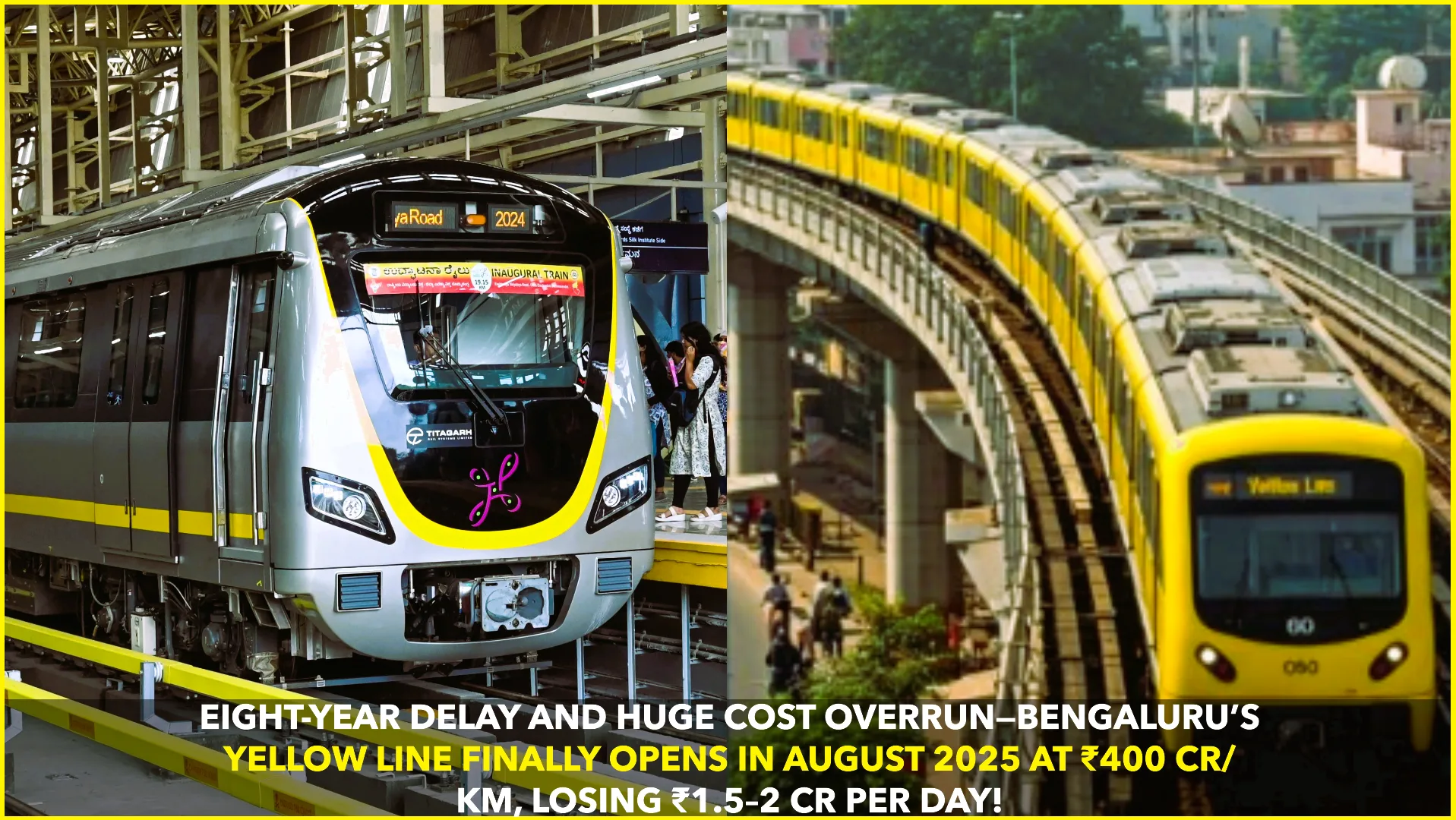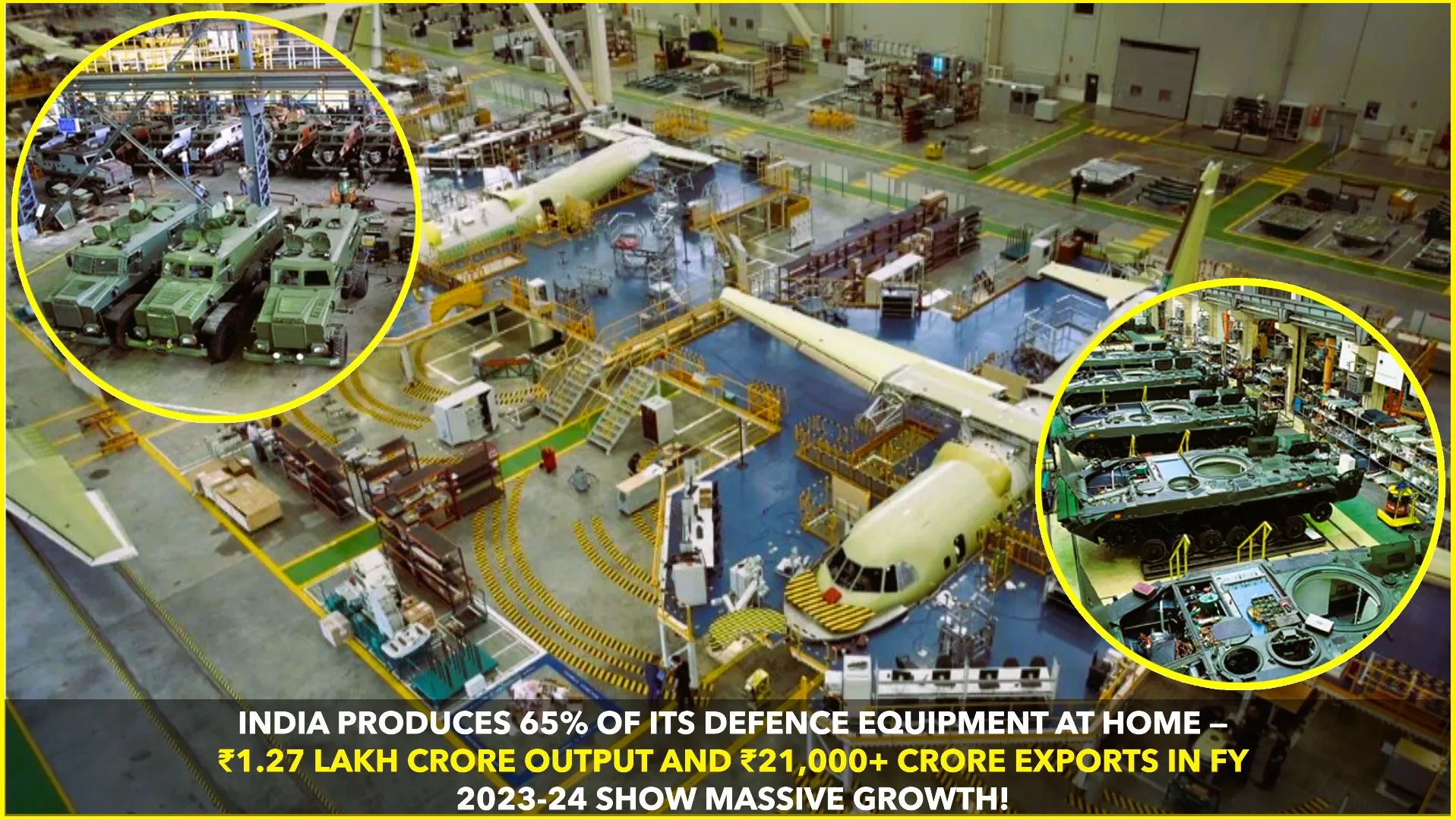After nearly eight years of delays, Bengaluru’s much-anticipated Yellow Line of the Namma Metro — stretching from Rashtreeya Vidyalaya (RV) Road to Bommasandra — has finally entered service in August 2025. What was supposed to be a 2021 launch instead became an expensive saga of overruns, setbacks, and high daily losses.
From Plan to Reality: Delays That Stretched Time and Money
The 19-kilometer elevated corridor, approved in the early 2010s as part of Phase II, kicked off construction only in 2017. Aiming for a 2021 completion, the project missed every target along the way. Among early warnings was one from veteran “Metro Man” E. Sreedharan, who cautioned that each day of delay would cost the Bangalore Metro Rail Corporation Ltd (BMRCL) between ₹1.5 to ₹2 crore Moneycontrol.
Costs Gone Up in Smoke
Originally pegged at around ₹5,744 crore, the project’s final bill ballooned to ₹7,610 crore — a whopping 32% hike. That brings the cost to approximately ₹400 crore per kilometer — significantly higher than the usual benchmark of ₹250 crore/km for elevated metro stretches MoneycontrolThe Economic Times.
Opening at Last
Prime Minister Narendra Modi inaugurated the Yellow Line on August 10, 2025, after almost a decade of planning and building. Public services started the next day, initially operating three trainsets at 25-minute intervals The Times of India+1The Economic TimesThe Indian Express.
A Corridor of Connectivity — and Crowds
With 16 stations, the line forms a vital link between RV Road in north Bengaluru and the booming technology hubs along Hosur Road and Bommasandra. Key stops include Jayadeva Hospital (future Pink Line interchange), Central Silk Board (Blue Line interchange), Electronic City, and Bommanahalli.
On its very first day of full operations, Bengaluru metro ridership spiked to 10.48 lakh commuters, with Yellow Line alone handling over 52,000 entries. Yet, the surge brought its own woes — stations like RV Road got dangerously crowded, given the sparse service frequency The Indian Express.
The Financial Toll of Delay
Sreedharan’s earlier warning proved prescient — delays translated into daily losses of ₹1.5–2 crore under BMRCL’s belt Moneycontrol. Over years, these losses stacked up dramatically, adding to the already swollen budget.
Why the Delay? Blame Complexity
Several factors pushed the project off course: administrative changes, delays in procuring driverless trains, safety clearances, and logistical hurdles. While BMRCL received its first driverless train prototype in February 2024, full deliveries and deployment stretched well into 2025. Only after intense lobbying did BMRCL bring in a full-time managing director to steer the completion ship The Indian Express.
Is It Worth It? Long-Term Gains Amid Short-Term Pain
While ballooning costs and lost earnings sting, the Yellow Line offers vital benefits. It promises relief from traffic bottlenecks around Silk Board, BTM Layout, and Electronic City — one of the most congested commuter corridors The Times of IndiaThe Indian Express. Daily commuters, especially IT professionals, now have a faster, more reliable option.
Still, with cost nearly double the norm and project delays spanning years, critics question whether better planning and execution could have spared BMRCL and Bengaluru taxpayers heavy losses.
Looking Ahead
The Yellow Line’s opening also marked the launch of groundwork for Phase III of the Namma Metro — a 44-km expansion that aims to further ease urban mobility across Bengaluru The Times of IndiaThe Economic Times.
If Phase III can learn from Phase II’s missteps, the city stands a chance at building smarter, cost-effective corridors from Day One.










